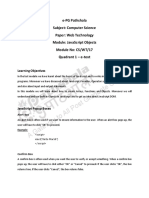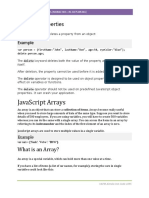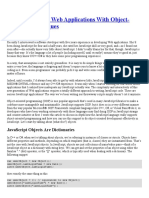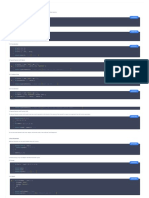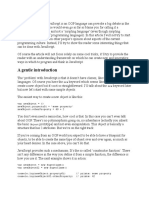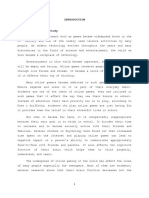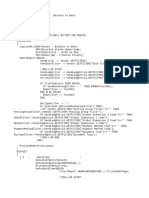0% found this document useful (0 votes)
39 views14 pagesIndex 14 Js Objects and Classes
The document provides an overview of JavaScript objects and object-oriented programming concepts, including abstraction, inheritance, encapsulation, and polymorphism. It explains how to create objects using object literals, instances, and constructors, along with examples of array, string, math, and date objects. Additionally, it demonstrates accessing object properties and methods through practical code snippets.
Uploaded by
prayogkhadka09Copyright
© © All Rights Reserved
We take content rights seriously. If you suspect this is your content, claim it here.
Available Formats
Download as PDF, TXT or read online on Scribd
0% found this document useful (0 votes)
39 views14 pagesIndex 14 Js Objects and Classes
The document provides an overview of JavaScript objects and object-oriented programming concepts, including abstraction, inheritance, encapsulation, and polymorphism. It explains how to create objects using object literals, instances, and constructors, along with examples of array, string, math, and date objects. Additionally, it demonstrates accessing object properties and methods through practical code snippets.
Uploaded by
prayogkhadka09Copyright
© © All Rights Reserved
We take content rights seriously. If you suspect this is your content, claim it here.
Available Formats
Download as PDF, TXT or read online on Scribd
/ 14










